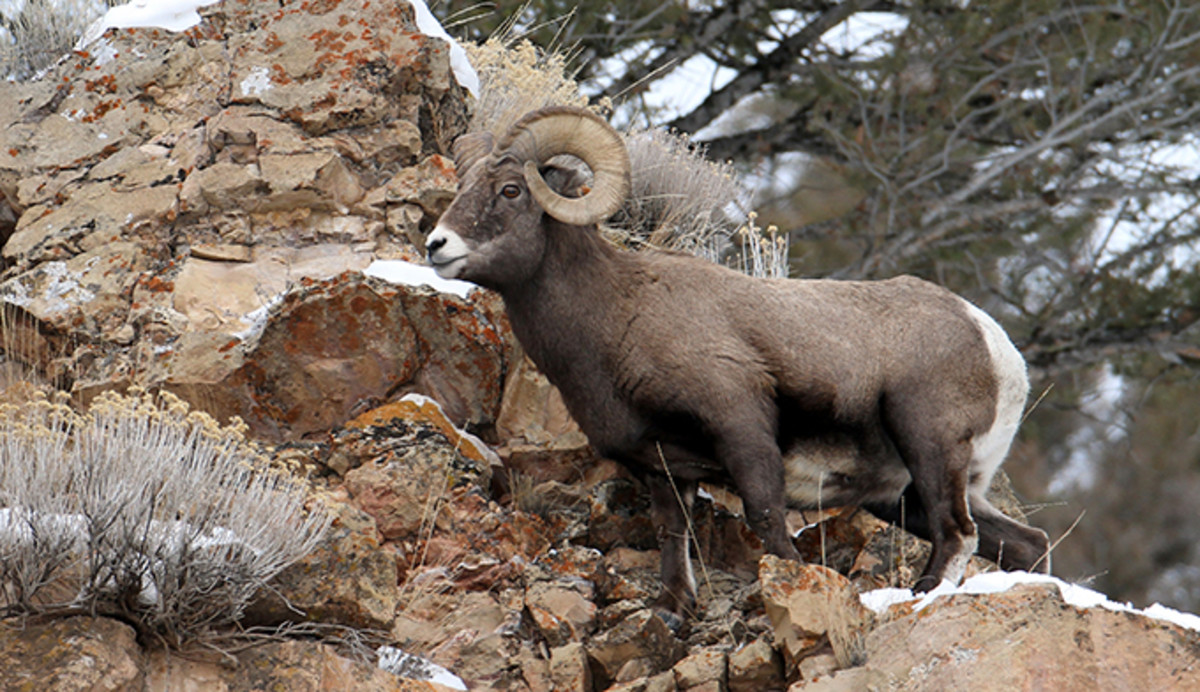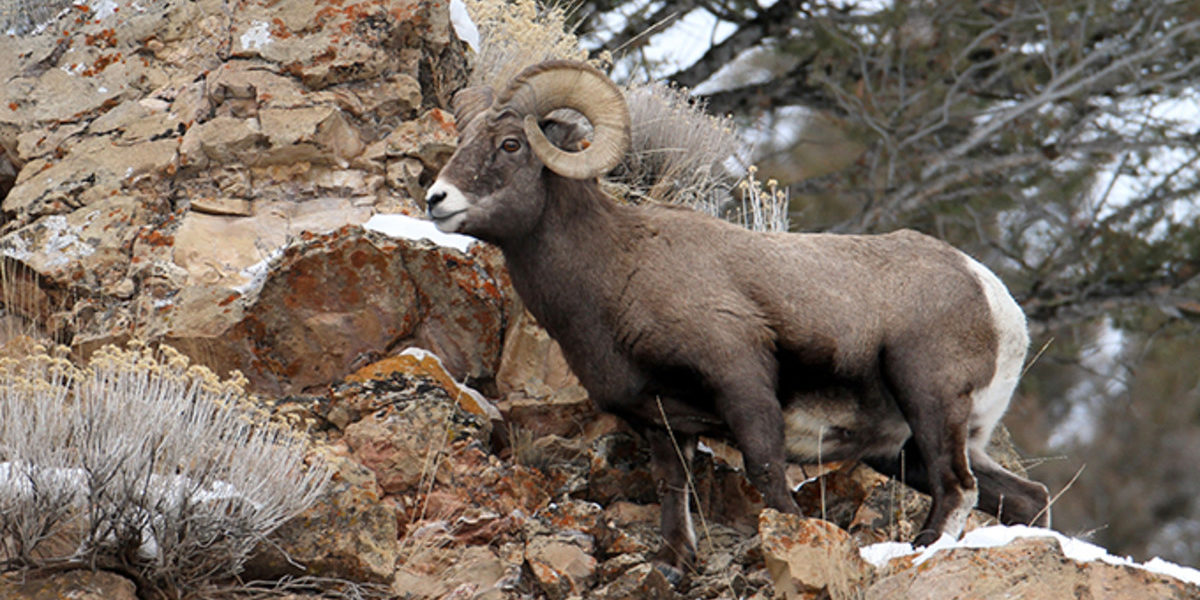
By Mike Koshmrl
Jackson Hole News&Guide
Via- Wyoming News Exchange
JACKSON —An interagency collective of biologists is recommending that 21,233 acres of high-quality winter habitat in the Teton Range be made off limits to humans to help an imperiled, declining herd of bighorn sheep stage a comeback.
If the recommendations are pursued and OK’d, a new area slightly smaller than the National Elk Refuge would be closed to backcountry skiing and human presence generally in the winter months. Those areas are broken up, occurring sporadically around the range.
The suggested closures were actually also devised with skiing in mind: 95% of the “high value ski terrain” identified through a collaborative community process would stay open. Yet at the same time, the suggested protections would also permanently preserve much of Teton Range sheep’s winter habitat — terrain they’d potentially abandon if shared with skiers.
“It would protect half of the bighorn sheep habitat,” Wyoming Game and Fish Department wildlife biologist Aly Courtemanch told the Jackson Hole Daily.
Designating closures on only half the high-quality habitat, she added, might not sound like a lot.
“But actually, a lot of the areas we aren’t proposing that are habitat are areas where it’s just really inaccessible to recreate,” Courtemanch said. “So we don’t feel that there’s a need to close those areas.”
New winter closures aren’t the only recommendations that have emerged from a long planning process spearheaded by a Teton Range Bighorn Sheep Working Group. That group also recommended that land managers in Grand Teton National Park designate specific travel routes, where skiers and split boarders would be restricted to a skin track cutting through important set-aside sheep habitat to reach open ski terrain.
Another strategy endorsed in the working group’s 100-page report includes stepping up education about how backcountry skiing influences bighorn sheep. As an example, they recommend adding signage at the top of popular ski lines like the Banana Couloir.
Courtemanch studied how bighorn sheep and backcountry skiers interact in the Tetons for her graduate degree at the University of Wyoming starting in 2008.
Analyzing the movements of humans and sheep that both carried GPS trackers, she found bighorn abandoned areas that were often tracked up. They even avoided areas that were only sporadically skied. When sheep and skiers did overlap, individual animals moved much more often than those that dwelled in skier-free swaths of the Tetons.
“It’s pretty cool,” Courtemanch said. “There are not many examples where graduate research leads to real conservation changes on the ground. But it takes a long time. That’s just the way things go with agencies.”
Better regulating human recreation to prevent disturbance is just one piece of a puzzle being assembled to help the Teton Range’s sheep. Grand Teton National Park and Wyoming Game and Fish are also in the process of eliminating a herd of non-native mountain goats, which have been intensively hunted and culled the past two years.
Both those steps were recommended by a panel of outside bighorn sheep experts who met in Jackson in 2019. Their task was to come up with a game plan to prevent the Teton bighorn herd from winking out after thousands of years of occupation. Functionally, there are two herds in the range that don’t intermingle. The southern herd numbers only about 40 animals, while the northerner herd is nearer 60 sheep strong.
“The goal that we’ve laid out is 100 sheep in the north and 100 sheep in the south,” Courtemanch said. “We feel like if we could get to those numbers we would feel much better about the sustainability of the herd.”
The latest batch of recommendations, which include 62 specific management actions, is the culmination of a collaborative process that was facilitated by the University of Wyoming’s Ruckelshaus Institute. Backcountry skiers, professional conservations and other members of the community gathered to learn about the issue, haggling with each other and poring over maps in early 2020 to mark areas they use and to draft ideas.
It will be up to Grand Teton National Park and the Bridger-Teton and Caribou-Targhee national forests to implement the policy suggestions. While those federal agencies have not rubber-stamped the report, they’re speaking favorably about the ideas that were outlined.
“We think that it’s a very good report that combines scientific research and professional wildlife management with a good collaborative process that engaged the public and stakeholders,” Teton Park Chief of Staff Jeremy Barnum said.
Wildlife managers also endorse the suggested next steps.
“From the Game and Fish perspective,” Courtemanch said, “our agency is 100% supportive of the recommendations.”
Barnum wasn’t sure what the next steps would look like on the Park Service’s end. A time-consuming process like an environmental impact statement, he said, might not be needed to act on the recommendations.
“There’s definitely a sense of urgency with what we’re doing to protect this herd,” Barnum said.






